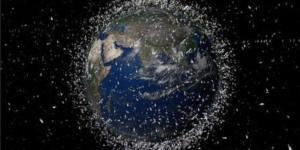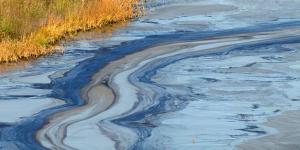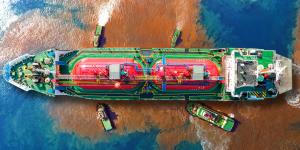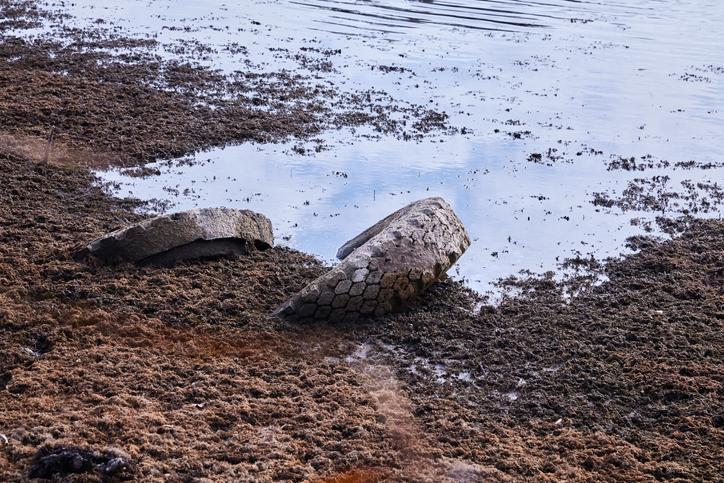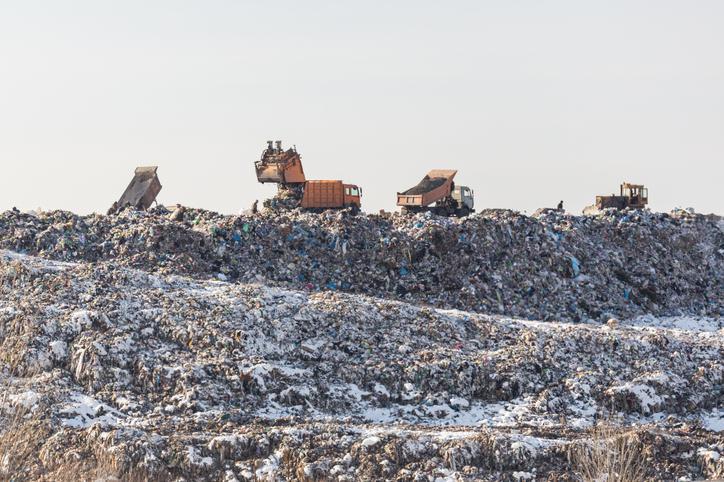What Is Leachate?


There is a lot of waste we can see piling up in landfills and even in areas where it is illegally discarded. Such waste is varied in nature, including decomposing organic matter, chemical spills, oxidized metals and plastics both macro and micro. Different types of waste decompose at different rates and in different ways, producing various byproducts in the process. Some of this waste byproduct is in the form of liquid which has come to be known as leachate. Due to its liquid nature, leachate can circulate through other types of waste and surrounding ecosystems, resulting in serious consequences. Water bodies and groundwater are particularly at risk of contamination.
At thedailyECO, we discover what is leachate? We find out how leachate is produced, its different types and how it can be controlled. The latter involves various treatment options which can be used to neutralize their threat and prevent contaminants entering water supplies.
What is leachate?
Leachate is the liquid that circulates among the waste found in landfills. It is a result of a process known as leaching whereby liquid passes through landfill waste and extracts various soluble particles of solids as it does so. The liquid leachate is able to do so thanks to fermentation and decomposition processes of organic matter, as well as other soluble materials such as types of industrial waste.
The water which allows the liquid leachate to accrue is usually from precipitation falling on the landfill itself. The rainwater percolates in the waste material and leaches out chemical compounds and biological materials. Since this material is from waste, leachate is highly polluted and poses a significant danger to ecosystems. For this reason, safeguards need to be set up to avoid it leaving the landfill.
Not all landfills meet the responsibility of containing and treating leachate. Unfortunately, many developing countries do not have the resources or regulatory structures to afford proper leachate treatment. Many developing countries have legislation and programs which require leachate management, but this does not mean that improper waste management does not occur in these countries also.
As we can see, leachate is a type of liquid waste, although it does contain soluble solids. Learn more about what is solid waste in our related guide.

Types of leachate
While we have illustrated the dangers of leachate in landfills, not all leachate is as dangerous as others. In fact, there is a type of leachate which is known to be very useful in agriculture. Worm castings are the result of worms breaking down organic matter by consuming it and egesting it. Also known as vermicompost, it is very nutrient rich and is beneficial as a fertilizer. It is so rich, it usually needs to be diluted before use.
In this way, we can differentiate between the two main types of leachates:
- Landfill leachate: liquids that circulate among landfill waste and occur through the leaching process when decomposition and fermentation occur.
- Worm leachates: liquids produced completely naturally by these animals in the soil and subsoil when they feed on organic matter and decompose it.
You can even make your own vermicompost at home with the right equipment. Learn how with our article on how to make worm castings at home.

How is leachate treated?
Liquid leachate can be disposed of safely, but it needs to be treated before this can happen. During this treatment process, the characteristics of the leachate need to be analyzed, as well as other factors such as the location of the landfill. For example, leachate from a recently established landfill will require different treatment than that of a landfill which has been in operation for a long time.
Another factor is whether the landfill is known to contain specific types of hazardous waste such as radioactive waste. To carry out the treatment of the leachate to avoid contamination, these factors will need to be analyzed.
Before its final treatment, leachate is siphoned off from the rest of the solid waste and stored in ponds. These ponds also differ in nature according to the type of landfill. Hazardous waste (HW) landfills are deposited in ponds that must be waterproofed with polyethylene to prevent leaks. Leachate from non-hazardous waste (NHW) landfills is usually collected in concrete ponds.
The technologies to treat leachate are the following:
Heat treatment (evaporation)
In this type of leachate treatment, the energy of the biogas generated in the landfill is used to evaporate the leachate. This technology controls leachate emissions. After the leachate liquid is evaporated, a sludge remains that is deposited back into the landfill. This is a similar process by which salt flats use evaporation to create useful salt product.
Biological
Aerobic or anaerobic treatments can be chosen to treat the leachate, depending on its specific characteristics. Aerobic biological treatments consist of using microorganisms in the presence of oxygen and agitation to purify the organic compounds present in the leachate. The anaerobic process has the same principle, although the microorganisms are in conditions characterized by a lack of oxygen.
Membrane systems
Membrane technology is increasingly used in waste management and this includes leachate treatment. Different types of membranes are used to filter the pollutants and other materials from the water. These include ultrafiltration, reverse osmosis, microfiltration, nanofiltration and direct osmosis.
Physico-chemical treatments
This treatment eliminates coagulant particles, i.e. metal salts and polyelectrolytes. Coagulation, flocculation and sedimentation processes are involved. The treatments are classified as chemical precipitation, reverse osmosis, NH3 stripping, chemical oxidation and absorption with active carbon.
Natural systems
Some systems that can function naturally, such as lagoons or wetlands, are proposed for the management of leachate as an alternative to other treatments. They can be established artificially where necessary so that they then function naturally. With these systems a large amount of territory is required for the processes, so they are not always considered practical.
Learn more about how waste can cause serious risks to the environment, as well as how their impact can be reduced, with our article on the different types of biomedical waste.
If you want to read similar articles to What Is Leachate?, we recommend you visit our Pollution category.
- Corena, MJ, 2008. Treatment systems for leachate generated in landfills . Deepening line of comprehensive solid waste management.

